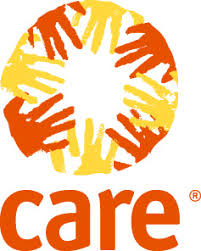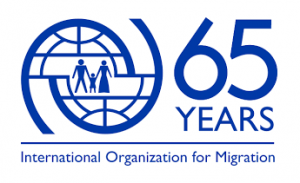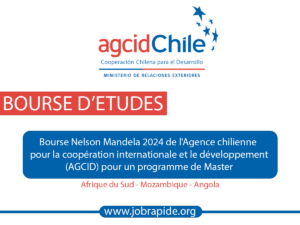There are 3,908 Nasdaq-listed securities as of June 2023, but as mentioned previously, not every type of security is included in the Nasdaq Composite index. On Dec. 1, 2020, Nasdaq proposed a new rule requiring companies listed on the exchange to report on the diversity of their board of directors. The rule requires companies to include on their boards at least one female director and one who is a member of an underrepresented minority or LGBTQ+, or to publicly explain why they have not done so. The SEC approved the board diversity disclosure rule on Aug. 6, 2021. Nasdaq Inc. is listed on the Nasdaq stock market under the symbol NDAQ and has been part of the S&P 500 Index since 2008. As noted above, the Nasdaq is a stock exchange headquartered in New York.
As such, it’s used to indicate the overall health of the economy and the specific sectors that are included in the index. The performance of the index allows investors to understand the performance of a part of the economy and make investment decisions based on that data. Its main index is the NASDAQ Composite, which has been published since its inception. The QQQ exchange-traded fund tracks the large-cap NASDAQ-100 index, which was introduced pepperstone canada in 1985 alongside the NASDAQ Financial-100 Index, which tracks the largest 100 companies in terms of market capitalization. There are assets like mutual funds or exchange-traded funds (ETFs) that are composed of the same stocks with the same weightings that try to at least match the index’s performance. The index’s value is calculated by summing the market capitalization of its components based on the current price of the constituents.
- One of the most well-regarded with respect to a passively managed fund is the USAA Nasdaq 100 Index Fund.
- The flip side of such ling-term success in an index based on market capitalization is that the Nasdaq Composite is very top-heavy.
- An index collects data from a variety of companies across industries.
- As such, you should view the value of an ETF based on its current marketplace price.
- He is a CFA charterholder as well as holding FINRA Series 7, 55 & 63 licenses.
In total, the social media company were able to raise a whopping $16 billion. Volatility profiles based on trailing-three-year calculations of the standard deviation of service investment returns. Founded in 1993, The Motley Fool is a financial services company dedicated to making the world smarter, happier, and richer. The Motley Fool reaches millions of people every month through our premium investing solutions, free guidance and market analysis on Fool.com, top-rated podcasts, and non-profit The Motley Fool Foundation. In terms of pricing , the USAA Nasdaq 100 Index Fund charges an expense ratio of 0.54%.
Returns by year
Once again, although much of the NASDAQ-100 is made up of technology firms, other industries such as biotechnologies, retail and healthcare are also included. Instead of including all of the common stocks listed on the Nasdaq exchange, the Nasdaq-100 only includes the stocks of the 100 largest non-financial companies listed. The 100 companies in the Nasdaq 100 make up more than 90% of the weight of the Nasdaq Composite Index. However, the index does not include financial institutions, such as those from within the investment banking, asset management or corporate banking spaces. Much like its sister index, the Nasdaq 100 is heavily weighted toward technology industry companies, which account for well over 60% of the index’s weighting.
About 55% of the benchmark’s value consists of stocks in the technology sector. Its second biggest sector is consumer discretionary, with velocity trade less than 20% of the benchmark’s value. Health care is a distant third sector, with stocks accounting for about 8% of the bogey’s value.
What Is Nasdaq?
The Russell 2000 index is considered a benchmark for smaller U.S. stocks. On November 26, 2013, the index closed above 4,000 for the first time since September 7, 2000. Although it still stood almost 20% below its all-time highs, the index set a new coinbase review record annual close of 4,176.59 on December 31, 2013. In November 2016, chief operating officer (COO) Adena Friedman was promoted to the role of chief executive officer (CEO), becoming the first woman to run a major exchange in the United States.
What is the NASDAQ? Complete Beginner’s Guide
Moreover, fully in-line with the platform’s appetite for industry-leading innovation, there have also been rumours that NASDAQ are looking to get involved in the cryptocurrency and blockchain asset space. One such example of this is the recent announcement that cryptocurrency market indices would be heading to the NASDAQ real-time data feed. The largest ever IPO to be facilitated by a NASDAQ listing was that of Facebook in 2012.
The exchange opened up for business in 1971 and was the first automated exchange in the world. The Nasdaq Composite Index, which is comprised of more than 2,500 listed companies, is one of the world’s most-watched stock market indexes and is considered a gauge of the U.S. and global economies. The Nasdaq 100 Index is a collection of the 100 largest, most actively traded companies listed on the Nasdaq stock exchange.
It began as a subsidiary of the NASD and officially opened for business on Feb. 8, 1971. The Nasdaq Composite Index is a market-capitalization-weighted index. Because the Nasdaq Composite is dominated by the historically volatile technology sector, index performance tends to be more volatile than that of the S&P 500 or the Dow Industrials. Its 9.1% decline in Q was the Nasdaq Composite’s worst since the 14.2% loss in Q as the COVID-19 pandemic struck.
What Are the Benefits of Index Investing?
The Nasdaq’s 12% drop in April 2022 was its worst since the 17.4% decline in October 2008 at the height of the global financial crisis. However, we should also note that the NASDAQ exchange does not only list companies. On the contrary they also list a full range of other financial instruments such as futures, options and ETFs (Exchange Traded Funds). Regarding ETFs, this covers commodities surrounding the likes of Gold, Silver, Uranium and Oil. The weighting of companies included in the Nasdaq 100 is rebalanced once a quarter, in March, June, September and December. Companies that no longer meet the Nasdaq 100’s rules for inclusion are replaced with new firms once a year in the third week of December.
























